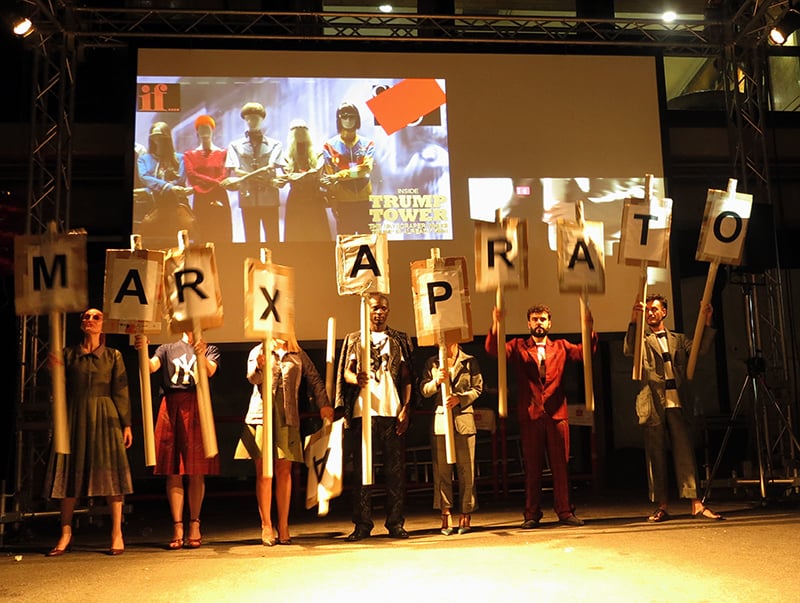The New York artist Rainer Ganahl is staging a political fashion show, Comme des Marxists, tonight, October 4, at the Fashion Space Gallery at the London College of Fashion—and, if the past is any indication, it’s sure to be a spectacle.
Comme des Marxists, which is a play on Japanese brand Comme des Garçons, was originally staged at New York’s White Columns in 2013 to largely favorable reviews. But in recent months some of the artist’s other fashion-themed works have courted controversy.
In June his fashion performance in Prato, Italy, drew ire from the commissioning museum, the Luigi Pecci Center for Contemporary Art, for being a little too political. The performance, titled Please Teach Me Chinese, Please Teach Me Italian – Marx a Prato, Gucci a Prato, was conceived as part of a city-led initiative to build a bridge between the native Italian and immigrant Chinese populations living in its Chinatown neighborhood.
Whereas Commes des Marxists features clothing emblazoned with Marxist symbols and slogans, the Italian-made outfits were printed with the phrases “please teach me Chinese” and “please teach me Italian” in English and Chinese.
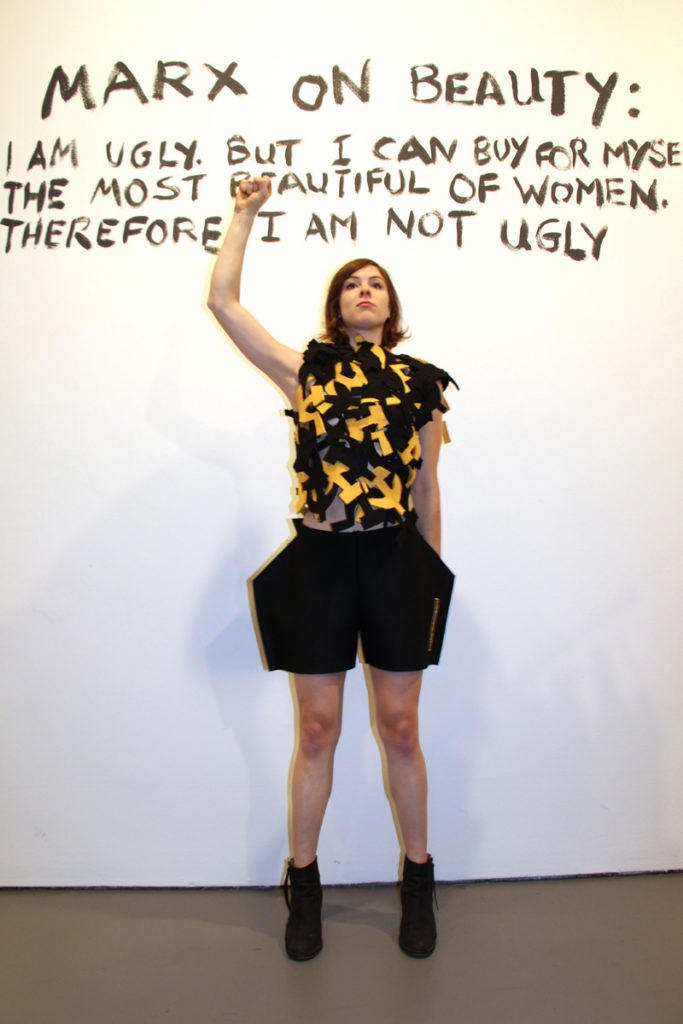
Rainer Ganahl’s Hammer & Sickle (2013) and
Marx on Beauty,1944/2013 (wall painting) from “Commes des Marxists.”
Some of the garments were modeled off of recent designs by Gucci, which produces much of its clothing in Prato’s Chinese-run factories. Local performers representing the plants’ “managerial” class wore high-end fabrics, while others from the “working class” wore outfits that had been bought off of the backs of actual laborers in the local factories. Ganahl retrofitted these garments with his logo as well as a screenshot label of the results page for a Google Image search of the terms “Prato” and “textile worker.”
During preparations for the show, however, Ganahl started to receive push back from the local government, university, and museum, which jointly commissioned the project. The institutions specifically took issue with three video works that he wanted to appear in the background of the performance. The videos paired Gucci’s logo with violent scenes from movies, which the institutional heads feared might open them up to legal disputes.

A look from Rainer Ganahl’s “Marx a Prato” collection. Courtesy of the artist.
Rosanna Tocco, a city official, told artnet News that she was upset because the project was initially envisioned as a more positive message and they felt “betrayed” by Ganahl’s inclusion of the negative violent imagery. She says Ganahl transformed the message into “a condemnation of many aspects,” including “the role that some fashion brands have in creating gray areas in the production chain.”
Ganahl defended his evolving vision for the project, telling artnet News ahead of the performance that the city seemed to be having trouble telling “the difference between an artist and a PR agency.” He eventually agreed to cover up the logos and the more violent elements in the videos, but the back and forth went down to the wire, causing the performance to begin two hours later than planned, at 11 p.m.
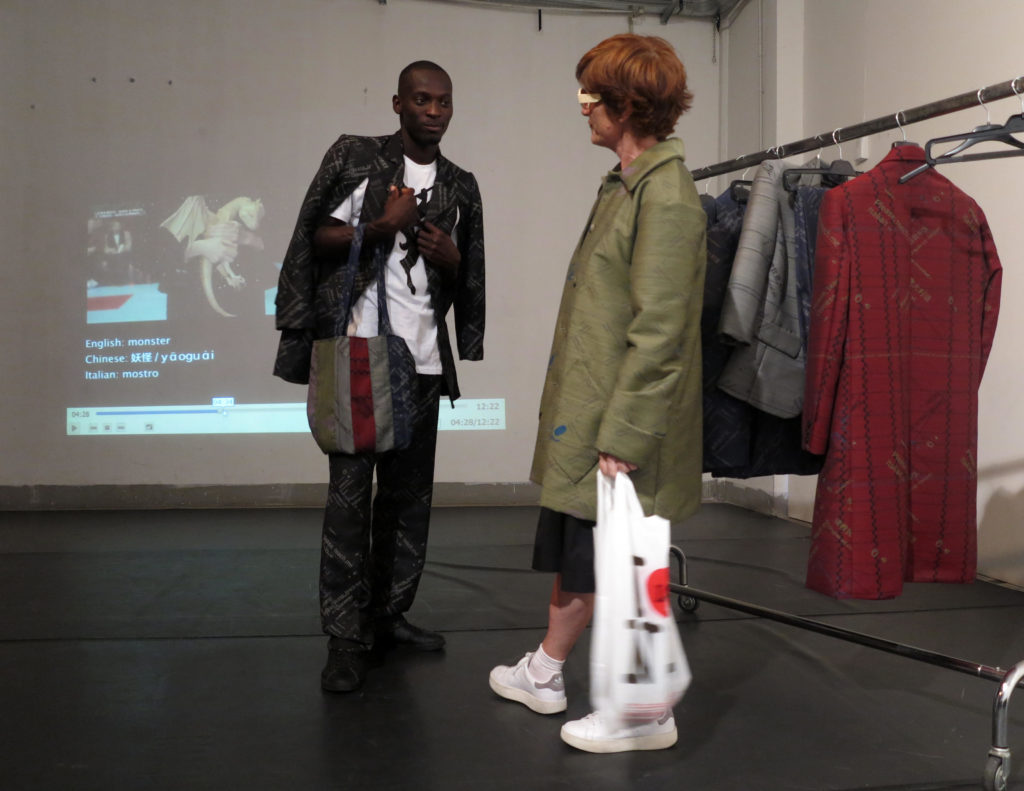
Image of Rainer Ganahl’s performance “Please Teach Me Chinese, Please Teach Me Italian – Marx a Prato, Gucci a Prato.” Courtesy the artist.
‘Like an Angry Bull’
Once underway, the show was interrupted by protests from the audience and two performers, who balked at footage Ganahl had added at the last minute.
Scenes culled from news reports about police raids on local factories and riots that had occurred in the city two years earlier showed Chinese people being beaten by police. A heated debate between the artist and his performers took place on stage and the show was terminated early by the director of Centro Pecci, Cristiana Perella.
There are disputed accounts about what happened next, but Ganahl described it as an “ugly scene.”
One artist attending the event, Enzo Camacho, partially witnessed an ensuing argument, telling artnet News that he saw a board member of the Centro Pecci, Edoardo Donatini, embroiled in a heated discussion with Ganahl. “At some point in the altercation, Rainer accused the elderly man of behaving like a fascist, and the man completely flipped out,” Camacho said. “He charged through the small crowd of people and literally chased Rainer across the piazza like an angry bull. It was surreal.”
Donatini did not respond to requests for comment.
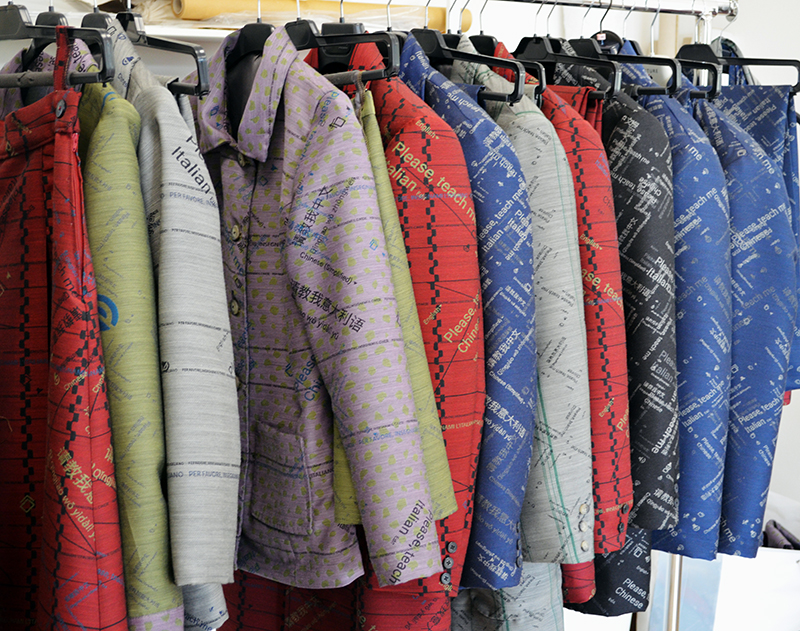
Rainer Ganahl’s designs for Please, Teach Me Chinese, Please, Teach Me Italian – Marx a Prato, Gucci a Prato. Courtesy of the artist.
“Working in the public realm needs from an artist a strong sense of social responsibility,” Perrella said, adding that this was particularly important in the troubled area of town where the event was held. “It’s not like making a performance in the frame of an art institution,” she continues. “If Mr. Ganahl didn’t want to be involved in what he called ‘a PR action,’ he could have simply declined the invitation to participate.”
Another Chance
Ganahl, who says the incident was “traumatizing and inspiring at the same time,” is planning to present the performance again at Vienna Kunsthalle in January 2019. It will be one of the last events curated by director Nicolaus Schafhausen before he steps down in March in protest over the rise of nationalist politics in Austria.
In London, the Frieze Week runway show, along with a “Marx Punk” concert, will kick off a larger exhibition of Ganahl’s work, which often critiques class, labor, and the fashion industry, at the gallery through January 12, 2019.
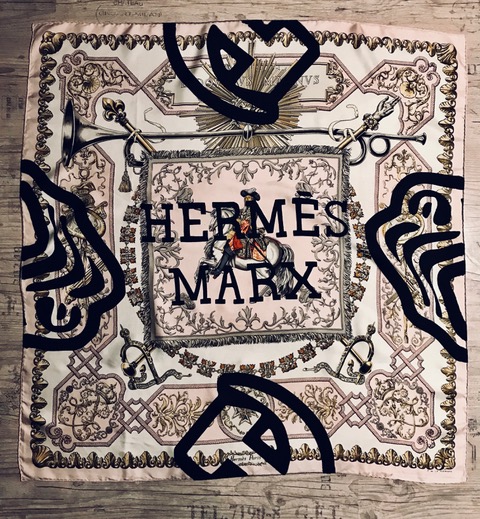
Rainer Ganahl silkscreened Hermes scarf from “Comme des Marxists.”
The show is curated by Camilla Palestra in collaboration with Centre for Sustainable Fashion.
